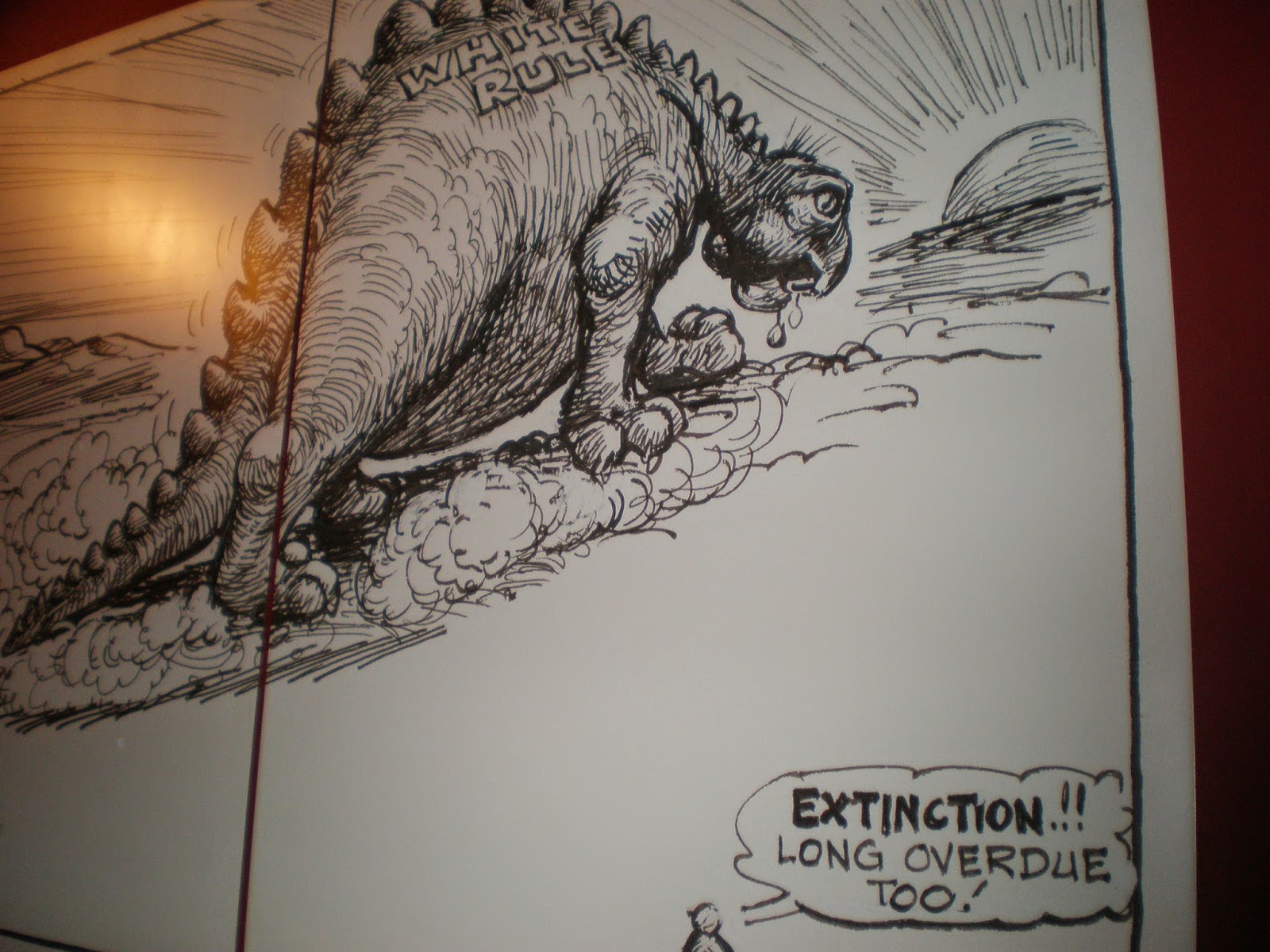 |
| The massive wooden doors to the court building at Constitution Hill. |
I have wanted to visit South Africa for quite some
time. I cannot even count the
number of people to whom I have said that exact sentence, or something close to it, before I realized how untrue it was. I actually have never had a
desire to visit South Africa – rather, I have felt an obligation to visit. I
felt an obligation to visit the country in Africa with the largest population
of white citizens, making it the most racially diverse country on the continent as far as the black–white ratio goes. I felt the obligation to visit the
country whose apartheid history parallels the brutality of America’s pre-civil
rights movement history. I felt an
obligation to visit the country that kept one of my heroes hostage for twenty
seven years of his adult life to later embrace him as president of that same
land. If you know me and you know
my passions, it is no surprise to you that I wanted, or felt obliged, to visit
South Africa.
 |
| Inside of the court building. |
It seems illogical to be as invested in racial equality as I
am and not have experienced South Africa for myself – even if just for two
weeks. Also, as someone who has previously lived in West Africa and is now
currently residing in East Africa, I was looking forward to experiencing
another ‘directional section’ of the continent. Of course within these ‘sections’, each country it unique and has its own rich culture. That being said, it means something to me to have visited at least one country in each part of the continent. And, I could
not have been luckier to experience South Africa with the girl my mom calls her
‘other daughter’: my dear friend JoJo.
JoJo is someone who has accepted and embraced and all of the ways that I
‘defy’ the expectations society has for me. She has supported my passion for race relations and has
listened to far more than her fair share of my often-lengthy rants/reflections/outrages on the current state of
race relations both in our country and around the world.
Since South Africa’s historical and political influence was
the real reason behind my interest in visiting, we intentionally planned several
politically and/or historically significant stops into our agenda. These stops
included Constitution Hill, Soweto, the Apartheid Museum in Johannesburg, the
Slave Museum in Cape Town and Robben Island.
Soweto is the town, not far from Johannesburg, where Nelson Mandela’s family home is. I felt so very honored to not only visit his neighborhood but also step inside his former home. Mandela’s street has become a hot spot for tourists, lined with vendors selling ‘African’ souvenirs and tourist–friendly restaurants inviting you in for a savory bite. I would imagine that the touristy Soweto that we experienced is nothing like the Soweto where Mandela actually lived. The new feel of Soweto made it less appealing to me because it did not feel authentic – although I am still glad to have been able to see it for myself. While we were roaming the streets being tourists, I learned that Desmund Tutu has a home on the same street of Mandela, which was very exciting news to me, as I am a huge support of the bishop.
 |
| Quotes painted on Mandela's street, and me sitting in front of his home. |
After walking around Soweto and enjoying a delicious lunch
there, we headed to the Apartheid Museum, which impacted me more than any of the other stops of this nature– even more than Robben Island, which was the stop I expected to impact me the most. I learned a great deal while touring the museum and felt the discouraged, fearful and outraged spirits of South
Africa’s citizens of color as I read more and more about the hardships people
of color experienced during apartheid.
I have only had such an strong, overpowering reaction like this twice
before: while standing in the slave castles in Ghana and while touring the
Holocaust Museum in Washington D.C.
I guess it is part of the human condition to feel disgusted when reading
about government sanctioned courses of action resulting in the hanging of its
citizens, the open firing and killing 69 people in one afternoon and the
like. I honestly felt numb as I
walked through the Apartheid Museum, reading about such inhumane and brutal actions.
 |
| Preparing to enter through the proper entrance based upon the card we were randomly given 'to be' for our tour. |
 |
| One of the eight pillars outside museum; a few others are responsibility, freedom, equality, respect. |
 |
| Method in which many ANC supporters were murdered, to be later recorded as suicides. |
 |
| My favorite image from the museum. My sentiments exactly! |
 |
| The cell where Mandela lived for 18 years. |
For that, South Africa, I thank you.



No comments:
Post a Comment